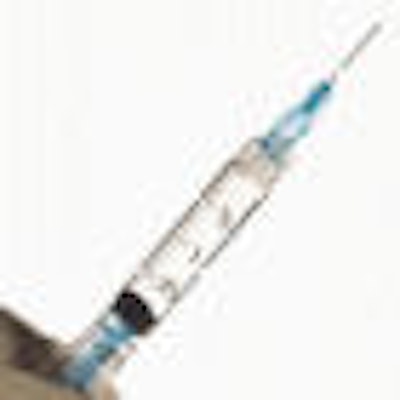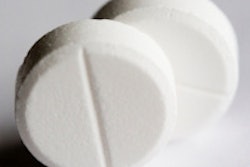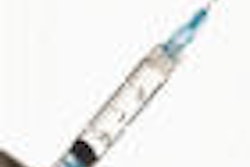
Articaine worked better than competing anesthetics in seven out of 10 randomized clinical trials of infiltration analyzed for a review presented at the recent American Association for Dental Research (AADR) meeting in Washington, DC. But articaine and lidocaine appeared very similar in potency in this research, and a clinical study presented at the same session found lidocaine as good -- almost.
"We have a number of solutions to choose from, and, for me, that's a daunting task," said Ryan Brandt, D.D.S., a University of Michigan endodontic resident. He said he'd found recommendations from some of dentistry's leading luminaries, but "these opinions don't necessarily agree with the evidence." On the other hand, lidocaine is still the most used for infiltrations in the U.S., he said.
“To my surprise, injection discomfort differed significantly between solutions.”
— John Meechan, B.D.S., Ph.D.,
Newcastle University
To clarify the choices, he and some colleagues launched a systematic review, in which the reviewers agree in advance on precise criteria for evaluating the quality of studies they read. "This approach can be less biased than a narrative review," he said.
Dr. Brandt and other University of Michigan researchers scoured the literature looking for well-designed clinical trials. They used Medline (the National Library of Medicine) and Embase (Elsevier) databases, and searched tables of contents of leading journals as well.
They identified 422 studies, but only 15 of these were randomized controlled trials of infiltration. Two of these evaluated volumes of anesthesia, one looked at the temperature, and another at the concentration of vasoconstrictor. Ten compared articaine to other solutions given by the same technique, and this was the focus of the review.
The number of patients in the studies ranged from 20 to 96. Differences in methodology among the studies limited the conclusions Dr. Brandt could reach. Still, he came away with two primary findings:
First, size matters. While a 1-mL dose provides adequate pulpal anesthesia for more than 30 minutes, increasing the dosage over 3 mL makes the numbness last longer.
Second, articaine worked better in seven trials out of the 10 in which it was compared to other solutions, mostly lidocaine. In only three of these were the results statistically significant.
"Looking at this evidence, I'm probably going to use a little more articaine than in the past," Dr. Brandt said.
Clinical trial
But in one of the largest clinical trials, articaine emerged as barely superior, if at all. John Meechan, B.D.S., Ph.D., a Newcastle University lecturer, reported randomly dividing 100 patients with irreversible pulpitis into two groups. Half received 4% articaine with 1:100,000 epinephrine and half received 2% lidocaine with 1:80,000 epinephrine in a maxillary infiltration.
He explained that his team used the different concentration of epinephrine because that was the formula commercially available in the U.K.
The clinicians who administered the anesthesia didn't know which solution was which, and neither did the patients or the researchers who used electric pulp testers to measure the patients' pain. Patients used a visual analogue score in which they indicated their level of pain on a continuum.
The researchers found that 76% of the patients who received articaine and 70% of those who received the lidocaine had no response to the maximum jolt with the pulp tester -- meaning they were essentially numb. These numbers were so close that they were not statistically significant (p = 0.5).
Likewise, when they went on to extract the teeth or extirpate the pulp, the researchers found that 86% of those numbed with articaine and 83% of those numbed with lidocaine reported the treatment was painless, once again a difference that was not statistically significant.
The lidocaine took slightly longer to achieve numbness: 5.9 minutes on average versus 4.9 minutes for the articaine. And while this difference was not statistically significant either, Dr. Meechan thought it could explain why another recent study had found articaine more effective; in that study, the testing was done exactly at 5 minutes (Oral Surgery, Oral Medicine, Oral Pathology, Oral Radiology, Endodontology [OOOOE], January 2009, Vol. 107:1 pp. 133-136).
Another possible explanation is the difference in vasoconstrictor concentration: the OOOOE study used 2% lidocaine with 1:100,000 epinephrine.
Although their study didn't show the superiority of one formula over another as an anesthetic, Dr. Meechan and his colleagues did find that the lidocaine injection itself hurt more. "To my surprise, injection discomfort differed significantly between solutions," he said.
Patients, rating their injection pain on the visual analogue score averaged 10 mm for articaine and 17.5 mm for lidocaine, a statistically significant difference (p = 0.026).
Dr. Mechan theorized that acidity associated with the epinephrine could explain why the lidocaine injections hurt more. "My gut feeling is that it's a pH problem," he said.
Copyright © 2010 DrBicuspid.com



















